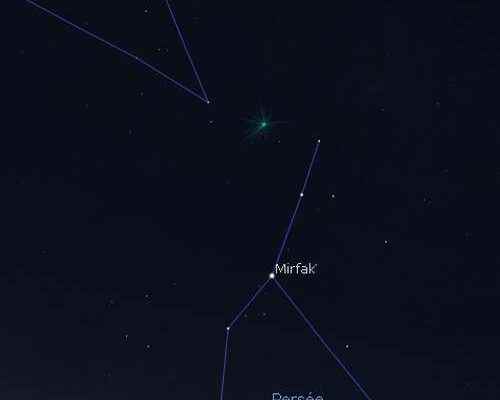Interested in what you just read?
Subscribe to the newsletter The ephemerides : everything that will happen in the sky during the coming month: what to watch, where to watch? All our newsletters
The swarm ofshooting Stars of the Perseids is the best known and admired of all. However, it is not the only one worth the detour. That of the Quadrantides, in January, and that of the Geminids, in December, are just as beautiful, and even offer a higher hourly rate than the Perseids. But, it is probably because these last occur at the beautiful seasonwhat’s more during the long holidays, that they are most successful.
Active from July 17 to August 24, this swarm seems to come from the constellation of Perseus, hence its name. These meteors are also called “the tears of Saint Lawrence” because, in the past, the date of the maximum was August 10, the day of Saint Lawrence.
This swarm is the result of the debris that the comet Swift-Tuttle leaves in its path as it passes Earth’s neighborhood every 130 years.
The first observations date back to the VIIIe century, and it was in 1866 that theastronomer Italian Giovanni Virginio Schiaparelli demonstrated that the swarm came from the passage of the comet Swift-Tuttle, discovered in 1862. As with many swarms, the hourly rate decreased over the years, to resume a marked improvement after the passage of the comet .
At the beginning of the last century, the hourly rate was an average of 50. When the comet returned to the vicinity of the Earth in 1992, the hourly rate was over 250. Two decades later, it is now an average of 100.
For this year 2022, forecasters announce an activity identical to previous years, with an average of 100 meteors per hour! Peak activity is expected at 7:52 p.m. UT. Unfortunately, this peak occurs while it is still daylight. It is advisable to observe after sunset. Sun from 8:45 p.m. UT. However, the Full moon will prevent you from seeing the faintest meteors.
Note that these times are only estimates and that sometimes the unexpected can hold surprises… It is also advisable to observe 24 hours before and after the maximum expected.
You will find the constellation of Perseus above the northeast horizon, around 8:45 p.m. UT.
